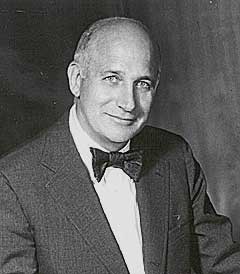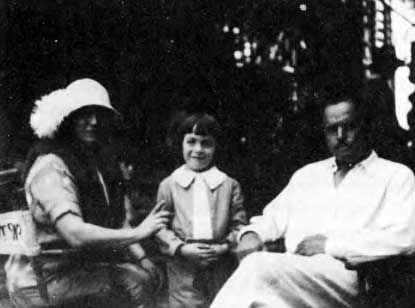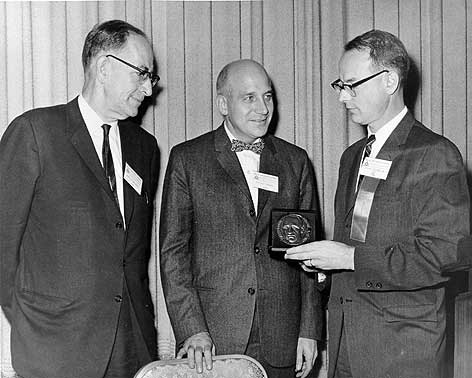

He replaced a vexatious battery-powered intercom system in one of his father’s high-rise apartment buildings with an electrical system at age 14. He built radios and phonograph amplifiers and earned pocket money installing sound systems for schools, nightclubs, and special events. West Laurel Hill Cemetery, Merion, even hired him to build a music system to mask the unnerving sound of gas burners in the nearby crematorium.
While in high school, he spent most afternoons at the Chestnut Hill Research Laboratory. In the College Board examination, Pre stood second in the country in Math. After completing high school, he was keen on joining and was also accepted into MIT. But, he was dissuaded by his parents who were keen that he attend business school and enrolled him at the Wharton School of Business.
Bored of business classes and after unsuccessfully trying to transfer to the school’s Physics department, Pres finally decided to move to Moore School of Electrical Engineering in 1937.
Here, Pres distinguished himself as a brilliant student. Unfortunately, he was not an outstanding one, given his penchant for perfectionism and his lack of enthusiasm for subjects that did not interest him.
While still at Moore, he created the Osculometer — a machine that he claimed could measure the intensity and passion of a kiss. In 1940, at just twenty-one, he applied for his first patent on a device called Light Modulating Methods and Apparatus — a motion picture sound system. The patent was granted two years later, but the machine remained unsold.
Career
Pres continued at the Moore School, earning his undergraduate degree in electrical engineering in 1941 and his master’s degree in 1943.
He was widely regarded as a superb engineer, even as a student. However, he could be stubborn, and his work habits were considered odd. He was highly nervous and would rarely sit in a chair or stand still while thinking. Often he would crouch on top of a desk or pace back and forth.
John Mauchly and Pres first met in 1942, when the Army asked the University of Pennsylvania to have a class of scientists help in the war effort. Eckert was the teacher in the class and Mauchly a student. Despite the difference in their upbringing and a 12-year age gap, Mauchly and Eckert became fast friends, wired together by a shared enthusiasm for creating devices.
Both were fascinated by electricity and wiring, and both had rigged up the same kind of boyhood toys and gimmicks. Eckert was a man more interested in doing than teaching, and prescribed lab exercises bored him. Mauchly knew what he wanted to work on and saw little value in simple experiments of a caliber he might have assigned to his Ursinus students.
For much of the lab time, Eckert and Mauchly spent talking about different ideas-including computing machines. These talks would result in the creation of ENIAC — the first large electronic digital computer in the world.
Electronic Control Company/Eckert Mauchly Computer Corporation
After World War II, IBM offered Eckert a job and his own lab for developing computers, but Mauchly talked him into jointly starting a new company — Electronic Control Company.
Their first work between 1946 and 1947 was with the National Bureau of Standards and the Census Bureau. They developed the specifications for a digital computer eventually known as the UNIVAC (Universal Automatic Computer); incorporating his delay line memory invention in 1948.
Like most start-up companies developing complex hardware, Eckert and Mauchly ran into their share of financial problems, consistently underestimating the development costs for their computers. To raise money, they signed a contract in the fall of 1947 with the Northrop Aircraft Company to create a small computer for navigating airplanes — the BINAC (Binary Automatic Computer).
The BINAC (completed in August 1949) and the UNIVAC were the first computers to employ magnetic tape drives for data storage. Smaller in size and composed of fewer parts than the ENIAC, both the ENIAC and BINAC machines had internal memory for storing programs and could be accessed by typewriter keyboards.
Remington Rand Corporation
Eckert and Mauchly had been kept from bankruptcy by the support of Henry Straus, an executive for the American Totalisator Company, which manufactured the odds-making machines used at race tracks. When Straus was killed in a plane crash in October 1949, Eckert and Mauchly knew they had to sell UNIVAC.
The Sperry Rand Corporation acquired their company on February 1, 1950. Eckert stayed on, researching to develop UNIVAC hardware, while Mauchly devoted his time to developing software applications. In contrast to Mauchly, Pres succeeded with the new management – in 1959, he even became vice president and assistant to the General Manager at Sperry Rand.
UNISYS
In 1986, Pres continued with the company even as it merged with the Burroughs Corporation. By then, the company was known as Unisys.
Eckert retired in 1989 but continued to serve as a consultant for UNISYS and the Eckert Scientific International Corporation, based in Tokyo, Japan.

What is John Presper Eckert known for?
Pres is known for his many achievements, and especially for his contributions to furthering computer technologies in the mid-1900s:
ENIAC
The Electronic Numerical Integrator and Computer, or ENIAC, is the first programmable electronic digital-purpose computer. Completed in 1945, It was computationally universal and could solve a wide variety of complex numerical problems when reprogrammed.
Initially intended to calculate artillery firing tables for the US Army’s Ballistic Research Lab, its first program was designed to study the feasibility of thermonuclear weapons.
UNIVAC I
The Universal Automatic Computer I, more commonly known as the UNIVAC I, was the first general-purpose electronic digital computer designed for business use. It was designed principally by Pres together with John Mauchly.
The UNIVAC I’s direct competitors at the time were punch card machines. To promote sales, the Eckert-Mauchly Computer Corporation joined with CBS. The UNIVAC I found success when it accurately predicted the results of the 1952 Presidential elections less than an hour after polls closed.
Astoundingly, the device was able to come as close as 3.5% to Eisenhower’s popular vote tally.
Marriage, Children, and Personal Life
Pres Eckert went on to live a fairly ordinary home life despite his many achievements.
Net worth
Pres Eckert was one of the richest computer scientists in history, with an estimated net worth of $1.5 million.
Marriage and Children
On October 28, 1944, Eckert married Hester Caldwell. The couple had two sons, John Presper III and Christopher before Hester died in 1952.
Ten years later, on October 13, 1962, Eckert married Judith A. Rewalt and had two more children, Laura and Gregory.
John Presper Eckert: Awards and Achievements
Eckert received an honorary doctorate from the University of Pennsylvania in 1964. After his first patent in 1942, he received 87 patents and numerous awards for his innovations, including the Howard N. Potts and John Scott Medals (both of which he shared with Mauchly).
Harry H. Goode Memorial Award
In 1966, Pres Eckert was presented with the Harry H. Goode Memorial Award – given to persons with notable achievements in the information processing field.
National Medal of Science for Engineering
President Lyndon B. Johnson presented him with the National Medal of Science in 1969. This national award, established in 1959, is given to persons who have immensely contributed to mathematical, biological, physical, and/or engineering knowledge.
Harold Pender Award
In 1973 Pres and Mauchly were awarded the Harold Pender Award for inventing the ENIAC. The Moore School faculty give this award to engineers who have displayed absolute distinction in their contributions to engineering.
IEEE Emanuel R. Piore Award
In 1978, John Presper Eckert and John Mauchly were awarded the IEEE Emanuel R. Piore Award for outstanding achievements in information processing.
The image featured at the top of this post is ©Unknown author / public domain


